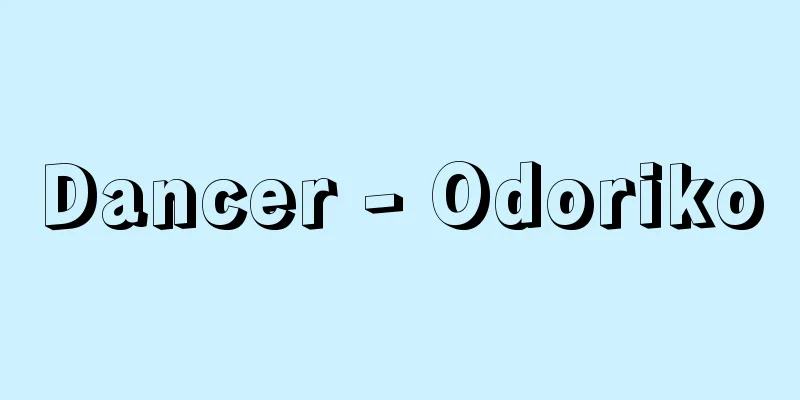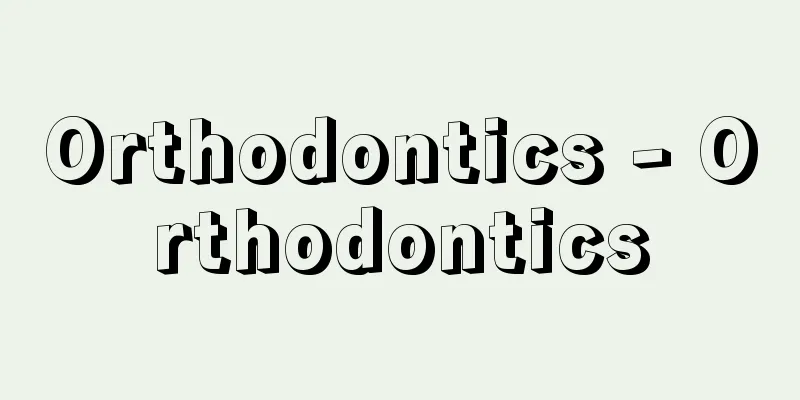Dancer - Odoriko

|
〘 noun 〙① A girl who dances. Especially a girl who dances at the Bon Odori festival. [Season: Autumn] * Haikai poem, Ikutama Manku (1673) "The dancer and the Ikutama cord sash (Kiyonobu)" ② A woman whose profession is dancing. (i) In the Edo period, a woman whose public art was dancing on stage and at banquets. Sometimes she engaged in prostitution. A female geisha. A town geisha. * Ukiyo-zoshi, Koshoku Ichidai Otoko (1682), 4 "I have yet to see anyone called an odori-ko or maiko." (ii) A woman who dances while traveling, stopping at inns and hot springs. Often in a group with a drummer, shamisen player, and dancer. * The Izu Dancer (1926) (Kawabata Yasunari), 1 "As I was face to face with the dancer up close." (iii) A woman whose profession is mainly Western dance. A dancer. ※Sleeping Faces (1933)〈Kawabata Yasunari〉"In front of the Shinjuku revue tent, six or seven men were standing, perhaps waiting for the dancers to return."③ The part of an infant's forehead between the bones that have not yet joined. A fluke. A dance. 〔Medical Synonyms (1774)〕④ (From the fact that if a live loach is put into miso soup, it will jump up in agony. Originally an esoteric term for monks.) Another name for "loach (loach)." ※Sakehon Ichiji Senkin (1778) 1 "In the olden days, even monks were shy about the world, and octopuses were like canopies, while loaches were like dancers ."⑤ Another name for the plant "janohige (snake beard)." 〔Revised Honsho Gangmoku Keimo (1847)〕 Source: The Selected Edition of the Japanese Language Dictionary About the Selected Edition of the Japanese Language Dictionary Information |
|
〘名〙① 踊りを踊る少女。特に、盆踊りで踊る少女。《季・秋》※俳諧・生玉万句(1673)「踊子や生玉の緒のたすきかけ〈清信〉」② 踊りを職業とする女性。(イ) 江戸時代、舞台、宴席などで踊りを見せることを表芸としていた女性。時に売淫を行なうこともあった。女芸者。町芸者。※浮世草子・好色一代男(1682)四「いまだ踊子(オドリコ)・舞子といふ者を見ず」(ロ) 旅をしながら、宿場、温泉場などで踊りをする女。多く、太鼓、三味線、踊り子で一団となっている。※伊豆の踊子(1926)〈川端康成〉一「踊子と真近に向ひ合ったので」(ハ) おもに西洋の舞踊を職業とする女性。ダンサー。※寝顔(1933)〈川端康成〉「新宿のレヴュウ小屋の前には踊子の帰りでも待ってゐるのでせうか、六七人の男が立ってをりました」③ 幼児の前頭部の骨と骨との間のまだ接合していない部分。ひよめき。おどり。〔医案類語(1774)〕④ (どじょうを生きたままでみそ汁に入れると、苦しがって踊りあがるところから。元来は僧侶の隠語) 「どじょう(泥鰌)」の異名。※洒落本・一事千金(1778)一「昔は出家も世を憚り、蛸は天蓋、泥鰌(どじゃう)はおどりこ」⑤ 植物「じゃのひげ(蛇鬚)」の異名。〔重訂本草綱目啓蒙(1847)〕
出典 精選版 日本国語大辞典精選版 日本国語大辞典について 情報 |
Recommend
primitive and simple bodies
…In his famous book, The Skeptical Chemist, publi...
University of Karawiyin
...Many tourists visit the old city, where fascin...
Campigny ruins - Campigny ruins (English spelling)
This is the standard site for the culture of the s...
Kuwana [city] - Kuwana
A city in the north of Mie Prefecture. It was inco...
Ibrahim Temo
Please see the "Temo" page. Source: Enc...
Coagulation necrosis
...Although the mechanism of cell necrosis remain...
Academy Award - Akademisyo (English spelling) Academy Award
The Academy of Motion Picture Arts and Sciences (...
Osaka [city] - Osaka
Osaka City is located in the central west of Osaka...
Karpi, H.da - Karpi
...A type of colored woodblock print in which two...
Adam Krissi
…By 29 BC it had become part of the Roman Empire,...
Map of all countries - Bankokuzu
A map depicting the countries of the world. From t...
Anemone narcissiflora var.sachalinensis (English name) Anemonenarcissifloravarsachalinensis
…[Michio Tamura]. … *Some of the terminology that...
Engine oil - engine oil
Also called motor oil. A lubricant for automobile ...
Kitatama
...the general name for the three districts of Ni...
Life type
A classification of the life style of an organism....









